Betta fish have been sold in Western pet stores since the 19th century. However, they have served as pets to Thai royalty for even longer — since about 1,000 years ago. Ever since the 19th century, these fish have become one of the most favored fish species bought as pets.
Many people think of betta fish as ocean fish, but they actually evolved as freshwater fish. They are found in rice paddies, stagnant ponds, and other shallow freshwater areas in southeast Asia. Let’s take a closer look at the six countries and regions where you can find betta fish in the wild.
1. Thailand

The
betta splendenswe see in pet stores have been domesticated and bred to be ornamental fish.
©Digital Art StudioTH/Shutterstock.com
Formerly called Siamese fighting fish, you can find these betta fish in Thailand’s central plain. They were originally less ornamental and duller in color than the bettas we see in pet stores today. In the wild, they are typically smaller with shorter fins. Additionally, they’re mostly gray, green, brown, or olive, compared to the turquoise, violet, and other vibrant colors of pet store bettas.
Thai people began domesticating betta fish about 1,000 years ago. Children would find them in rice paddies or slow-moving streams and take them home. They would put two males together to watch them fight. Soon Thai royalty started keeping them to watch them fight, much like cock fighting.
Through years of breeding, much like breeding dogs for specific traits, the domesticated betta fish has become much more ornamental than its wild counterpart. Unfortunately, they have been bred for fighting as well as for beauty.
2. Malaysia
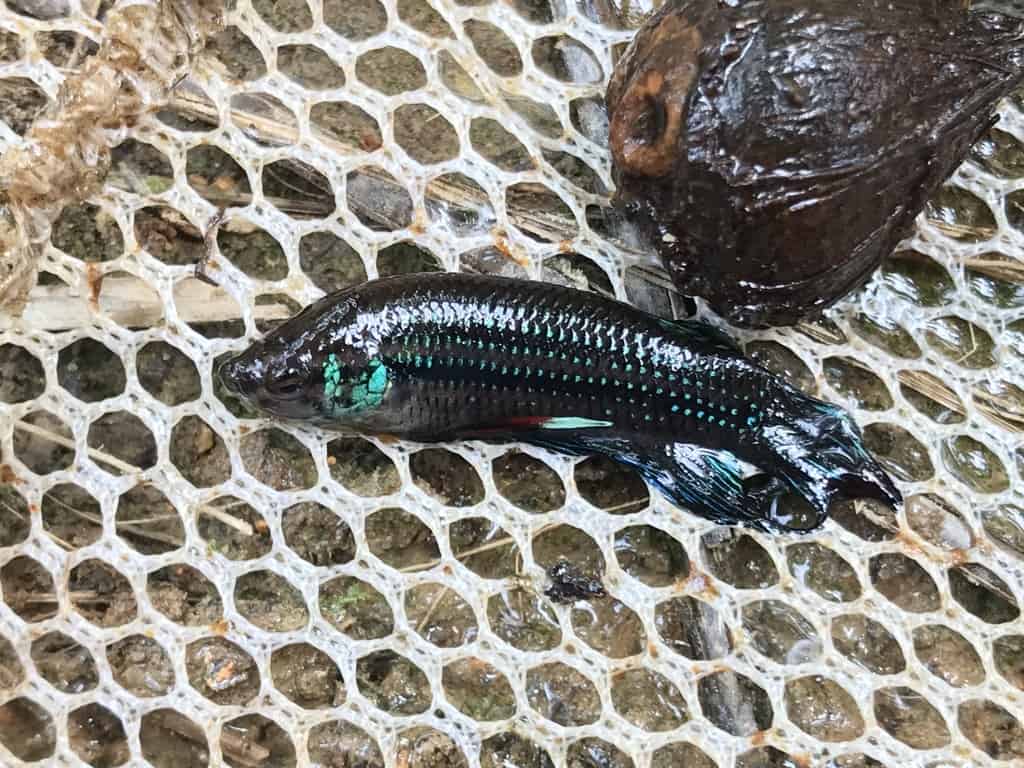
Wild male
betta imbellisfound in Malaysia aren’t as colorful as their pet store kin.
There are over 70 types of betta fish that are recognized, differentiated by colors, the shape of their tails, and patterns. In Malaysia, the betta imbellis — also called crescent betta or peaceful betta — is one of the native betta fish that occurs naturally there. This particular species grows up to 2.4 inches.
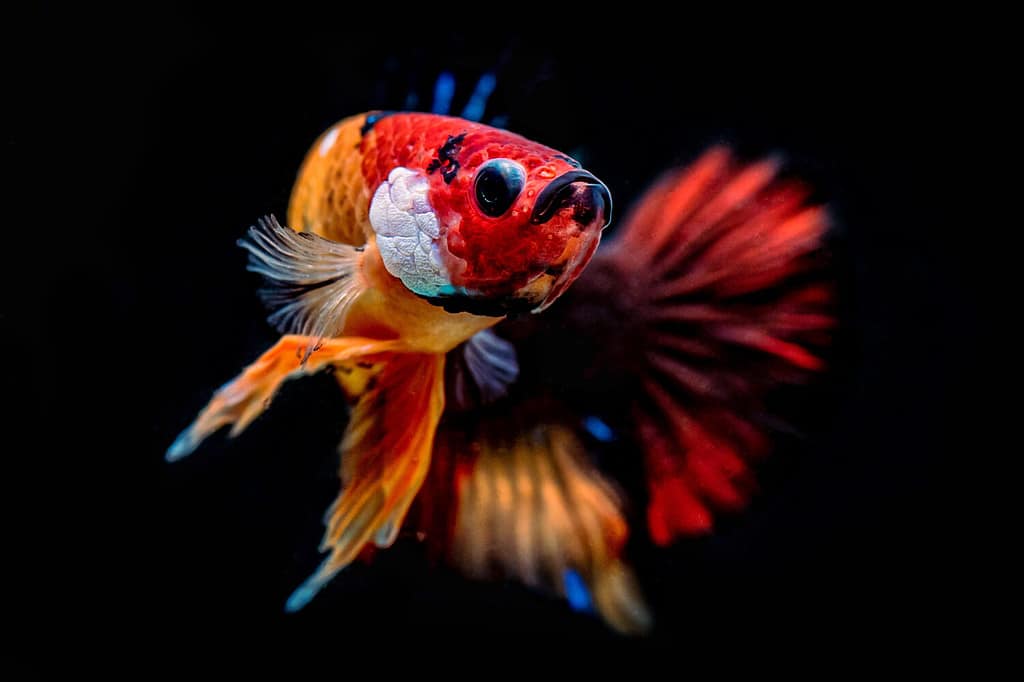
The koi galaxy betta is another example of how these domesticated fish have been bred to be more colorful and have stunning patterns and tails.
©Matt Albanus/Shutterstock.com
Other betta fish native to Malaysia are the betta akarensis, betta omega, betta bellica, betta brownorum, and several others that total at least 27 different kinds. The Malaysian betta fish we see in pet stores, however, differ from those in the wild in color, tail shape, and pattern due to domesticating and breeding.
3. Indonesia

Unlike the elegant betta fish in our aquariums, the recently discovered
betta andrei(not pictured) is smaller and paler in color, and its fins are much less ornamental.
©Tu.Kulaya/Shutterstock.com
Another southeastern Asian country, Indonesia, has betta fish in the wild as well. One variety — the betta andrei — is a gourami species that is native to Indonesia’s Singkep Island. Interestingly, this variety was at first mistaken for one of the “black water” fighting fish that thrive in Singkep Island’s acid waters. Only after closer examination was it found to be a “new” species.
The river ecosystem in Indonesia’s East Java region is fed by a lake with volcanic origins. This gives it an acidic characteristic. Yet, not only does the betta andrei live in this habitat, but it has stayed hidden from human eyes for years. Scientists have only discovered it in September of 2023.
4. Laos
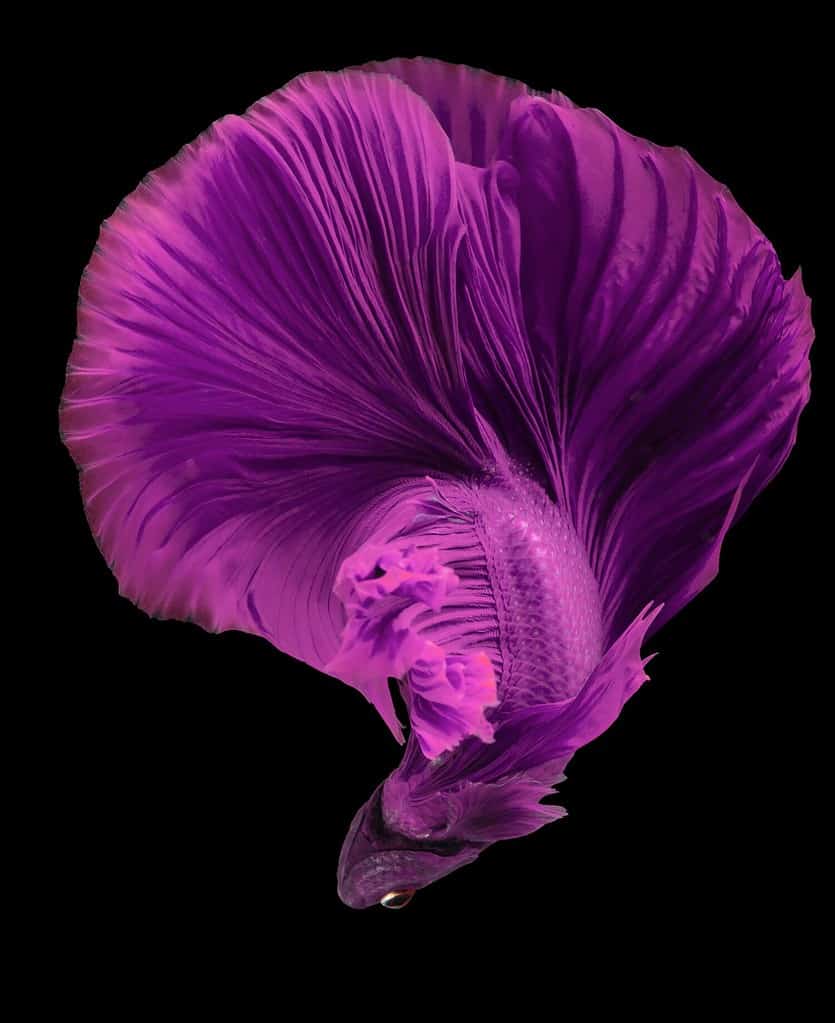
The true purple betta is the
most expensive
of the betta fish because of how rare it is.
©Digital Art StudioTH/Shutterstock.com
Laos is home to betta fish as well. The Mekong basins and Chao Phraya River, provide the slow-moving freshwater preferable to these fish, like the species, betta smaragdina. This variety also lives in rice paddies, swamps, and roadside ditches.
Even in ditches, wild bettas can survive on the leaf litter and other vegetation in the mud or sand. However, even though it’s a rather hearty fish, betta smaragdina is now being threatened by pollution and the eradication of their habitat. Not only are environmental factors threatening the fish, but they are being accidentally hybridized with discarded or escaped domesticated betta fish.
5. Vietnam
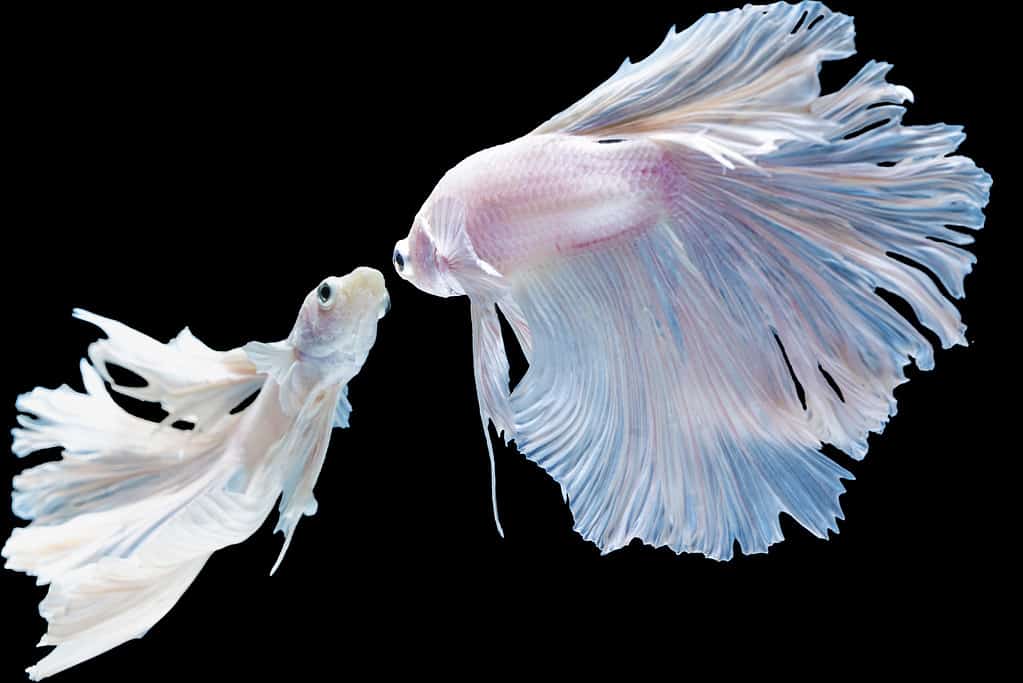
©iStock.com/kaew6566
Feathertail and rosetail betta fish have caudal fins that can spread 180° or more. The rays of the tail have several branches that look like the ruffled petals of a rose.
The betta siamorientalis is one species that lives in the wild in Vietnam. These betta fish are actually a relatively new species of the betta splendens, and they’re indigenous to Thailand and Cambodia. However, you can find them in ditches and other slow-moving waters in Vietnam as well. Even those found in the wild have iridescent, beautifully colored scales.
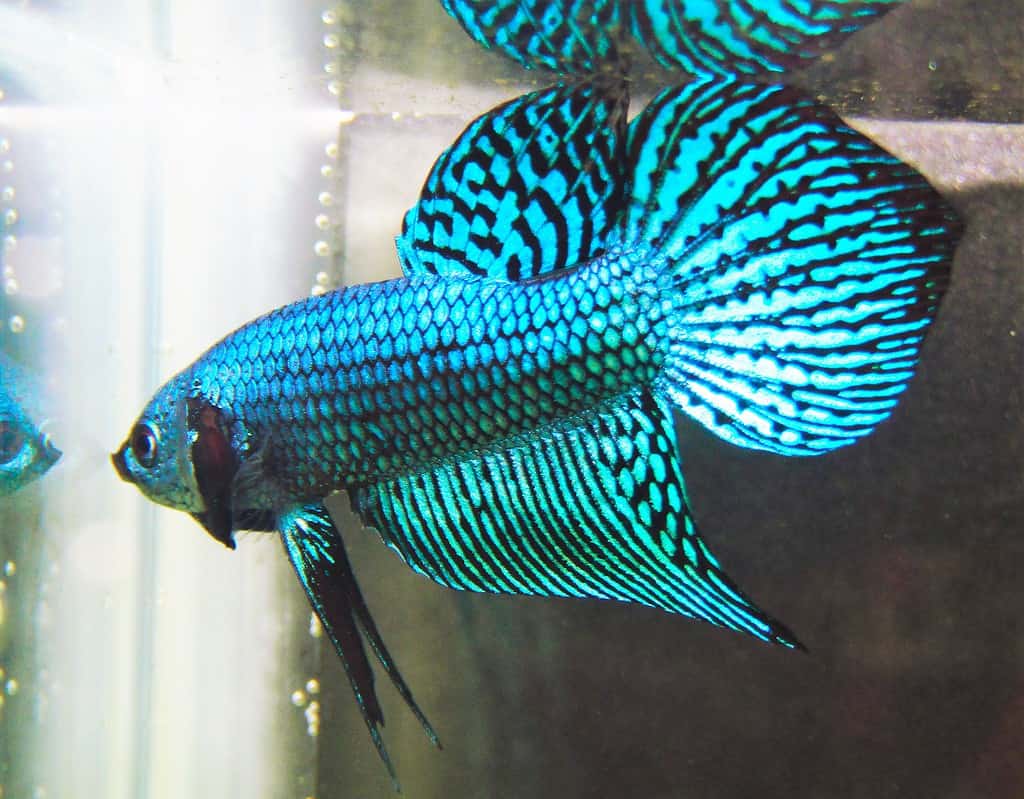
The
betta siamorientalisis not necessarily native to Vietnam, but they do live and thrive in this country.
Vang bettas are another species of fighting fish in Vietnam. People still pay to watch these fish fight in the ring. They gather around glass bowls with aggressive male bettas in them as they choose two at a time to fight. They put the two males into a glass pot with water as the crowd urges them to fight to the death. This practice has been banned in other southeastern Asian countries due to the cruelty of the sport.
6. Cambodia
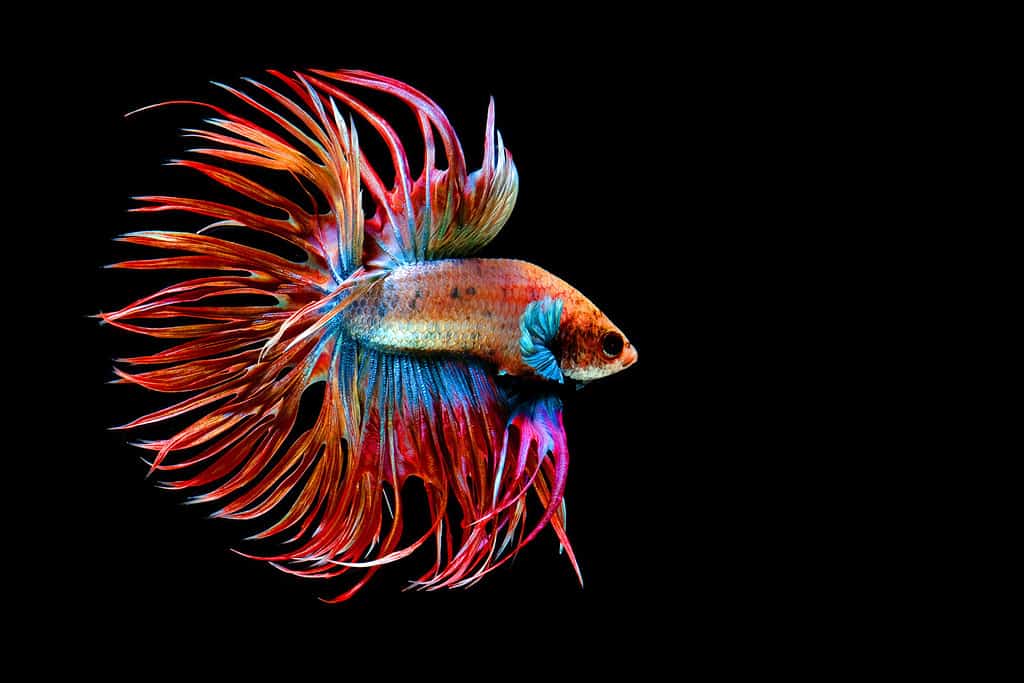
Crowntail bettas are one of the beautiful species bred for their ornamental value and have even been used as “show” fish.
©Vilasack Southisane/Shutterstock.com
Cambodia has several species of endemic betta fish, such as the betta stiktos, betta imbellis, betta splenden, betta siamorientalis, and betta trapeang rusaaie. The betta stiktos have been found in the Mekon River basin. This particular species was thought to be extinct, but it’s now reemerging with the help of some breeders.
Cambodian betta fish are typically bi-colored and smaller than other bettas. Despite being smaller, these fish are just as fierce as other fighting fish. Like other betta species, Cambodian bettas can live up to 3 years or more if properly cared for.
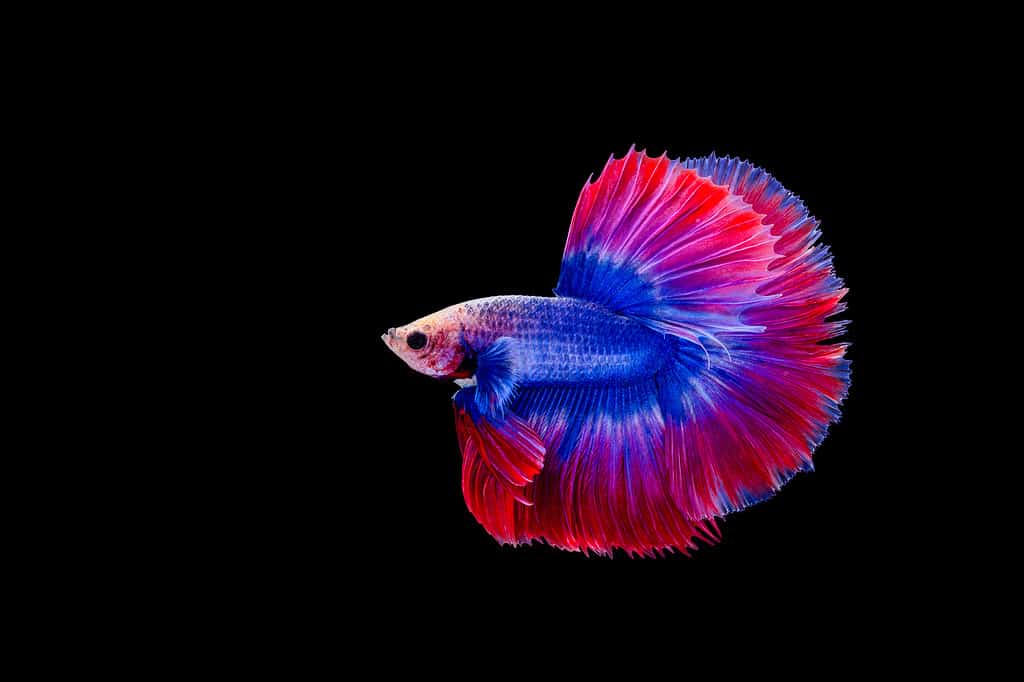
Cambodian bettas typically have light beige or pinkish bodies with darker coloring around their dorsal fins and heads, giving them a stunning coloration in total.
©iStock.com/Apiwan Borrikonratchata
Summary Table of Countries Where Betta Fish Are Found
| Country | |
|---|---|
| 1. | Thailand |
| 2. | Malaysia |
| 3. | Indonesia |
| 4. | Laos |
| 5. | Vietnam |
| 6. | Cambodia |
Thank you for reading! Have some feedback for us? Contact the AZ Animals editorial team.








